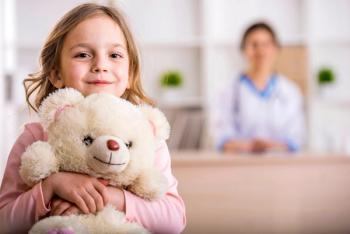
Skin lupus can progress more rapidly than previously thought
Systemic disease among patients with discoid lupus erythematosus, a chronic form of cutaneous lupus, can develop within one to two years of initial diagnosis, says Joseph F. Merola, M.D., reporting at the American Academy of Dermatology annual meeting in San Diego.
Recent data on the prevalence and prognosis of a cutaneous lupus show a need to appropriately counsel dermatology patients, researchers said at this week’s annual meeting of the American Academy of Dermatology in San Diego.
Joseph F. Merola, M.D., of Harvard Medical School, Boston, provided a new perspective on the risk of progressive disease among patients presenting with discoid lupus.
Dr. Merola focused on the risk of progression to systemic disease among patients with discoid lupus erythematosus (DLE), a chronic form of cutaneous lupus. Systemic disease can develop within one to two years of initial diagnosis.
“It was important for us to see that it seems to be a much shorter time from skin to systemic disease than has been previously reported, at least in our cohort,” Dr. Merola said.
“I think it is helpful information for patients, particularly if they've had skin disease for many years. It suggests that if they don't have systemic disease after a couple years, that is a reassuring sign that they will be less likely to develop systemic disease, particularly if they have negative serology,” he said.
Earlier research from Dr. Merola and colleagues at Brigham and Women’s Hospital Lupus Center found that one-third of patients with systemic lupus erythematosus (SLE) present first with skin manifestations.
It’s not uncommon for these patients to present first to a dermatologist. “If you're seeing one of these patients and they hear the word lupus, how we use that term and describe skin lupus is important so they understand their risk of systemic disease or whether they have systemic disease,” he said.
While some research suggests an inverse association between DLE and risk of lupus nephritis or end-stage renal disease among SLE patients,
This finding will no doubt have an impact on the information we provide to patients presenting with features of DLE as part of their systemic disease, he said.
Those findings might suggest SLE patients with features of DLE should not be thought of any differently in terms of risk counseling. Counseling for any patient with DLE may include discussion of standard treatment approaches, which are supported by varying levels of clinical evidence, and so DLE care is sometimes more eminence-based rather than evidence-based, Dr. Merola said.
Most patients who warrant systemic therapy are started on anti-malarial medications such as hydroxychloroquine, while second-line therapy may include agents such as methotrexate, mycophenolate, while immunomodulatory drugs like lenalidomide or thalidomide might be reserved for later lines of therapy.
While high-quality, placebo-controlled, interventional studies are currently rare in DLE, there is hope that development of standard classification criteria such as the
“To move research forward, the classification criteria are an important step. There are a lot of apples-and-oranges comparisons in the literature, since we haven't had a good classification set to get the right patients in the trials,” he said.
There are new biologic agents for SLE in development. Dr. Merola is a principal investigator in
“In general, we still have a really good number of patients who continue to fail first, second, and third line therapies - so there's no question there's an ongoing need. We have not reached our saturation point for therapy, by any stretch of the imagination,” he said.
DISCLOSURES
Dr. Merola reported disclosures related to AbbVie, Amgen, Biogen, Eli Lilly and Company, Janssen Pharmaceuticals, Inc., Momenta Pharmaceuticals, Inc., Novartis, and Pfizer, Inc.
REFERENCE
Newsletter
Like what you’re reading? Subscribe to Dermatology Times for weekly updates on therapies, innovations, and real-world practice tips.

















